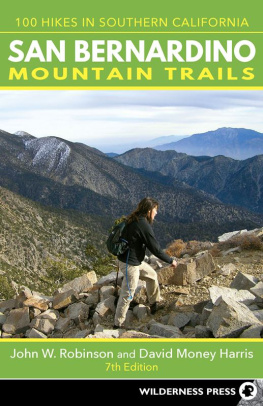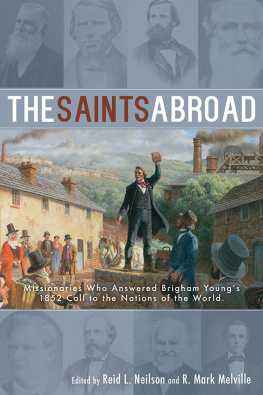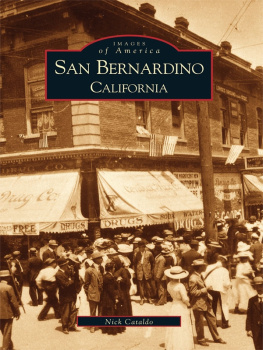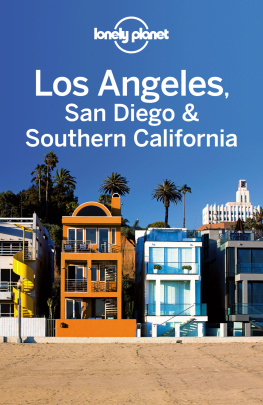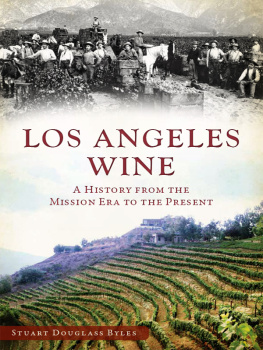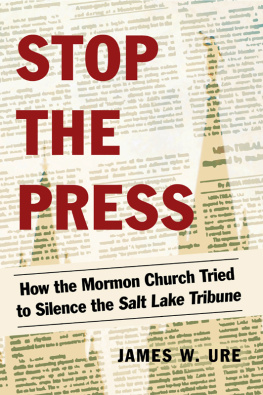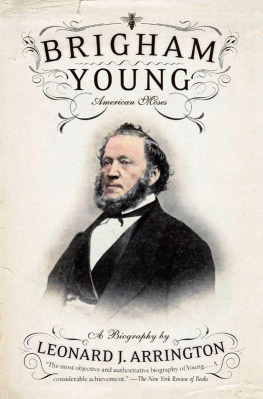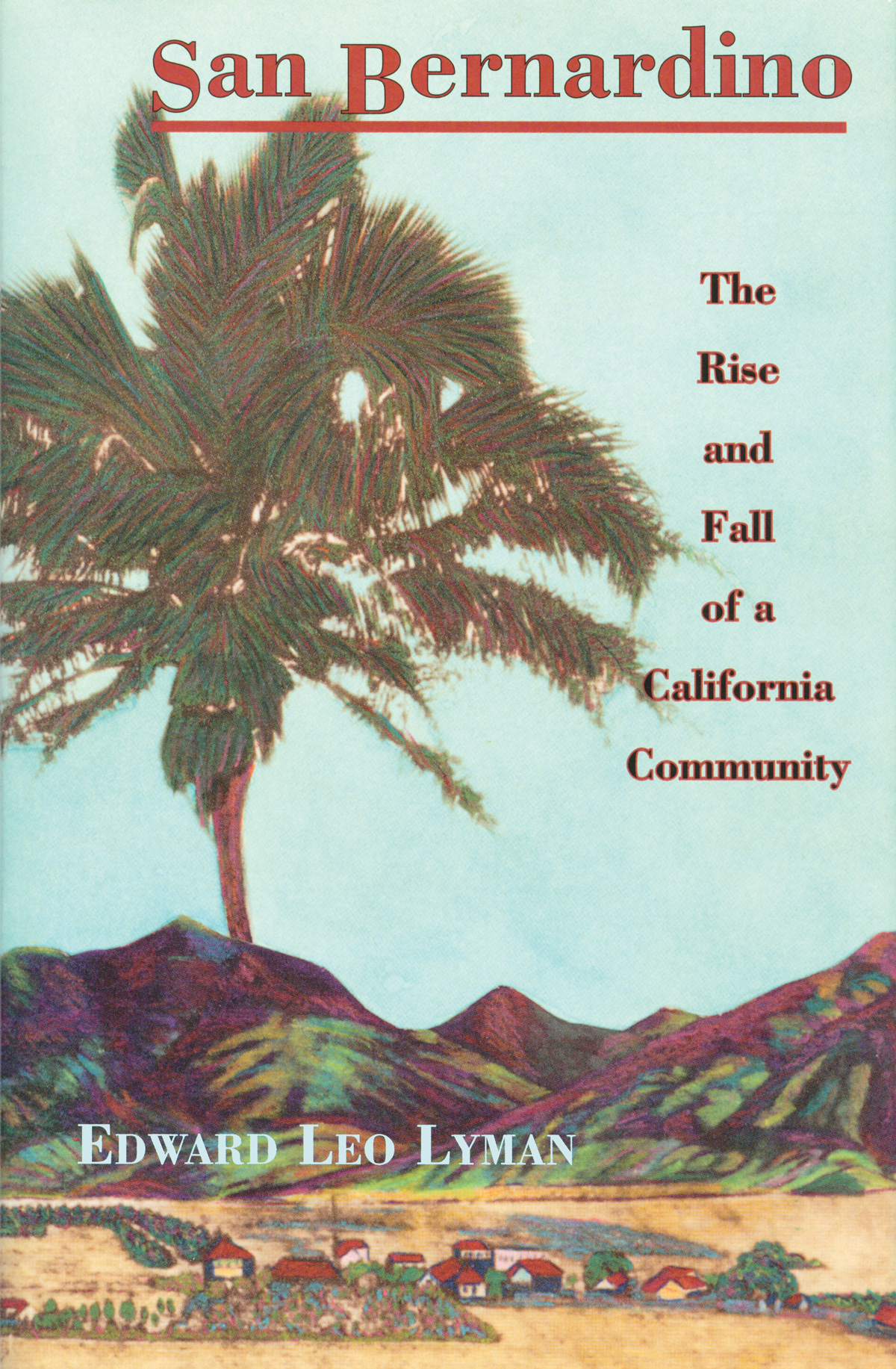SAN BERNARDINO
The Rise and Fall of a California Community
by
Edward Leo Lyman
SIGNATURE BOOKS SALT LAKE CITY 1996
COVER DESIGN & DRAWING COLORIZATION: K. C. MUSCOLINO
COVER DRAWING: HENRY MILLER, SAN BERNARDINO, CALIFORNIA IN 1856.
San Bernardino: The Rise and Fall of a California Community
Copyright 1996 Signature Books. All rights reserved.
Library of Congress Cataloging-in-Publication Data
Lyman, Edward Leo,
San Bernardino : the rise and fall of a California community /
Edward Leo Lyman.
p. cm.
Includes bibliographical references and index.
ISBN 1-56085-067-1 (Hard Back)
1. Mormons-California-San Bernardino-History
2. Mormons-California-San Bernardino Valley-History.
3. San Bernardino (Calif.)-History
4. San Bernardino Valley (Calif.)-History
I. Title.
F869.S18L96 1996
979.495-dc20
95-9698
CIP
Contents
on the cover:
A DEFINITIVE WORK
This is a magnificent piece of work. The cooperative dreams, the communal colonization, the reassessment of Brigham Youngthese are the heart of this impressive book. Edward Leo Lyman gives readers a profound sense of meaning and an emotional context. Robert V. Hine, author, Community on the American Frontier: Separate but Not Alone
As a descendant of the founder of San Bernardino, Lyman breathes into his narrative the most intimate details. This is a definitive work. Ward M. McAfee, Professor of History, California State University, San Bernardino
Lyman writes about hardy, interesting, stubborn souls who did not always march to the same rhythm as their leaders. The detail and color are especially valuable. Ronald W. Walker, Professor of History, Brigham Young University
At last an author with local background, scholarly training, and rare access to invaluable original sources. The remarkable contemporary journals add a personal, human touch. Arda Haenszel, Historian, San Bernardino County Museum Association
cover flaps:
In the mid-1800s, San Bernardino emerged as one of the largest settlements in southern California. It surpassed Pueblo de los Angeles and San Diego in grain and lumber yields and boasted a burgeoning cattle industry and promising wine vineyards. But as a Mormon communethe farthest outpost in Brigham Youngs Rocky Mountain empirethe colony was threatened, and finally abandoned, in 1857 during the Utah war with the United States.
From the beginning, Young had misgivings about the colony. Particularly perplexing to him was the mix of atypical Mormons who gravitated there. Among these were ex-slave holders; inter-racial polygamists; horse-race gamblers; distillery proprietors; former mountain men, prospectors, and mercenaries; disgruntled Polynesian immigrants; and finally Amasa M. Lyman, the colonys leader, who was involved in spiritualist seances.
Despite Youngs suspicions, when he issued the call to relocate to Utah, two-thirds of the citys 3,000 residents obeyed, leaving behind their cumulative fortunes, a city stripped of its regional economic standing, and an enduring legacy of diversity. Recounting this remarkable story, Edward Leo Lyman skillfully interweaves the most intriguing details about the setting and chain of events, emphasizing both the significance and irony.
about the author:
Edward Leo Lyman , Ph.D, University of California at Riverside, is a professor of history at Victor Valley College and former visiting professor at California State University at San Bernardino. His previous publications include the award-winning Political Deliverance: The Mormon Quest for Utah Statehood and articles in Arizona and the West ; California History ; Idaho Yesterdays ; Southern California Quarterly ; and Utah Historical Quarterly . He is co-author of the forthcoming Millard County, Utah: A Centennial History .
Dust jacket design by K. C. Muscolino.Printed in the United States of America.Signature Books is a registered trademark of Signature Books, Inc.
Introduction
The San Bernardino Valley, fertile and well-watered, was occupied by a relatively dense population of Serrano and Cahuilla tribal groups of Native Americans when the first Spaniard missionaries crossed through the vicinity in the 1770s. Other contacts by Californias early padres occurred periodically over the next generation, and by 1819 interest in establishing an inland chain of Catholic missions led to consideration of the area as one such suitable location. With full assistance from local Indians, a zanja or water ditch diverted a stream from Mill Creek, some ten miles east, into the area designated for the future mission, and instruction in the cultivation of crops, an essential institutional function, commenced. Over the ensuing decade buildings were erected and Franciscan padres from San Gabriel, some forty miles to the west, labored with several hundred native converts, mostly baptized at the mission but residing near its branch, or asistancia, at San Bernardino. Unfortunately, political upheavals accompanying Mexican independence led to the secularization of all California missions in 1834, the year San Bernardino would have achieved independent mission status.
In the fall of 1851 the San Bernardino Valley was transformed from a Mexican rancho into the first and for most of a decade the largest Anglo-American settlement in the California Southland. During this period of rapid development the community, comprised of members of the Church of Jesus Christ of Latter-day Saints (Mormon), ushered the region into the mainstream of U.S. economic enterprise and citizenship. Yet at the beginning of the colony San Bernardino was hardly a typical American town because of the unusual degree of cooperation and selflessness demonstrated in every phase of its establishment. One of the first historians of the area, Father Juan Caballeria, concluded: The Mormons who first came to San Bernardino Valley were ideal colonists So far as material advantages went there was perfect equality. There was no wealth and no poverty among them As a community they were honest, industrious, law abiding, peaceful citizens and under their thrifty management the beautiful valley blossomed into marvelous productiveness The history of early San Bernardino offers an excellent opportunity to examine what was, at least for several years, an ideal community.
As did their fellow pioneers elsewhere, the San Bernardino colonists possessed a unique combination of commitment to their community forged through previous persecution and pioneering challenges, along with what they regarded as a divine injunction to build the Kingdom of God wherever they happened to be assigned at the time. Contemporary participants recognized the major key to their success was the commonality of purpose that marked virtually every undertaking during the first several years. Mary Ann Rich, wife of one of the leaders, described the construction of roads, ditches, a fort, and other projects as working almost as one family, they were so united. Branch clerk and historian Richard R. Hopkins lauded, in the spring of 1852, Such unanimity of feelings as that which existed among us had scarcely been witnessed in such a degree before. But this happy situation did not endure. Just three years later Hopkins lamented that in San Bernardino the near antithesis of the former situation had developed: It is almost impossible to insure a concert of action upon any object of public interest. What most detracted, Hopkins asserted, was the emergence of self-interest.Yet the Mormon brand of community cooperation always provided for individual initiative and accountability, and thus the challenge inherent in such a system was striking a balance between the needs and interests of separate families and those of the entire group. Both the examples of selfless cooperation and the stresses arising from self-interest are exemplified in the California colony.


